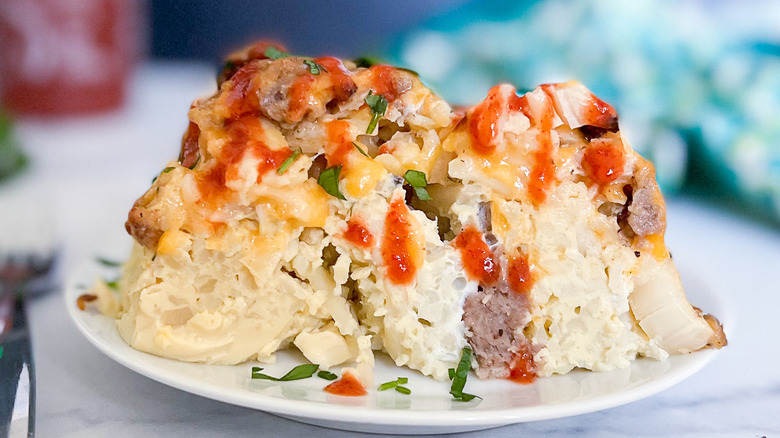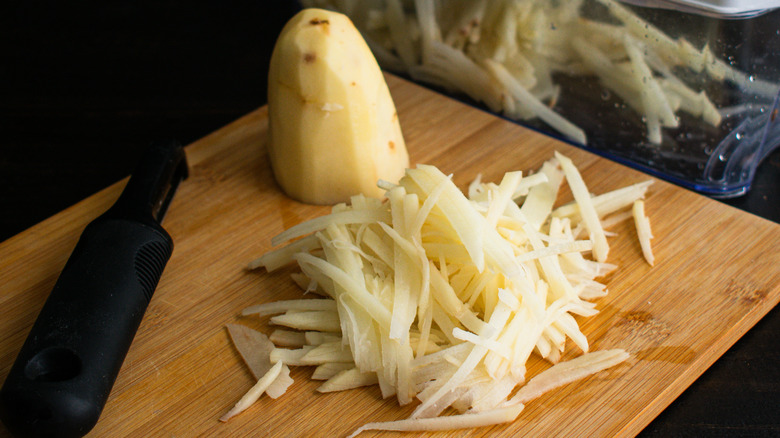The Key Ingredient For A Sturdy Breakfast Casserole
There are various factors that can make or break a breakfast casserole. Since we eat with our eyes first, a good casserole should be visually pleasing. It should also recall the flavors of breakfast and taste delicious. Not to mention that it should boast textural diversity and be hearty enough to satisfy hungry appetites. While it takes different additions to achieve a well-rounded result, there's one key ingredient that brings the most structural balance and backbone to a breakfast casserole, and that's hash browns.
Hash browns often find their way onto breakfast plates next to sausage links, fried eggs, and the like, so it shouldn't come as a surprise that the ingredient pairs just as well inside a savory, breakfast-inspired casserole. Although the neutral profile of the spuds allows them to be effortlessly incorporated into any recipe, from meat-heavy hot dishes to plant-based breakfast casseroles, the biggest benefit of adding hash browns into a breakfast casserole is that they provide a great deal of structural integrity.
Beyond bulking up less-than-satiating recipes, hash browns can give casseroles a certain sturdiness. Essentially, due to their starchiness, potatoes can effectively absorb all of the moisture released by ingredients as a casserole bakes. Evidently, the inclusion of hash browns guarantees that breakfast casseroles will maintain their shape, which can help boost aesthetics. However, it can also make for easier serving and, most importantly, dining. In essence, hash browns are essential when it comes to crafting a better breakfast casserole.
The dos and don'ts of using hash browns in breakfast casseroles
Any hash browns — shredded, cubed, or perfectly shaped patties — can be added to a breakfast casserole. Likewise, both homemade hash browns and store-bought bags are equally viable options, but we prefer the latter for the sake of convenience and ease. Just remember that while frozen spuds can be used straight from the freezer, they can also be defrosted if you're worried about sogginess. In contrast, fresh hash browns should always be sautéed beforehand for the best result.
Depending on the size of your casserole and personal preference, the amount of hash browns necessary can vary. However, it's wise to include at least a cup of potatoes, if not more. Additionally, don't forget to season the spuds prior to incorporating them into a casserole. Aside from the standard salt and pepper, consider coating them with a sprinkle of onion powder, a dash of cayenne, a pinch of oregano, or even blends like Old Bay or Tex-Mex seasoning.
As for how to work hash browns into a casserole, layering them between ingredients is a great option for all types of hash browns. Alternatively, some recipes, like a cheesy sausage casserole, may instead benefit from mixing ingredients together and then pouring everything into a casserole dish. Otherwise, hash browns can even be used as a crispy topping. Regardless of how you experiment, know that adding hash browns to a breakfast casserole is never a bad idea!

